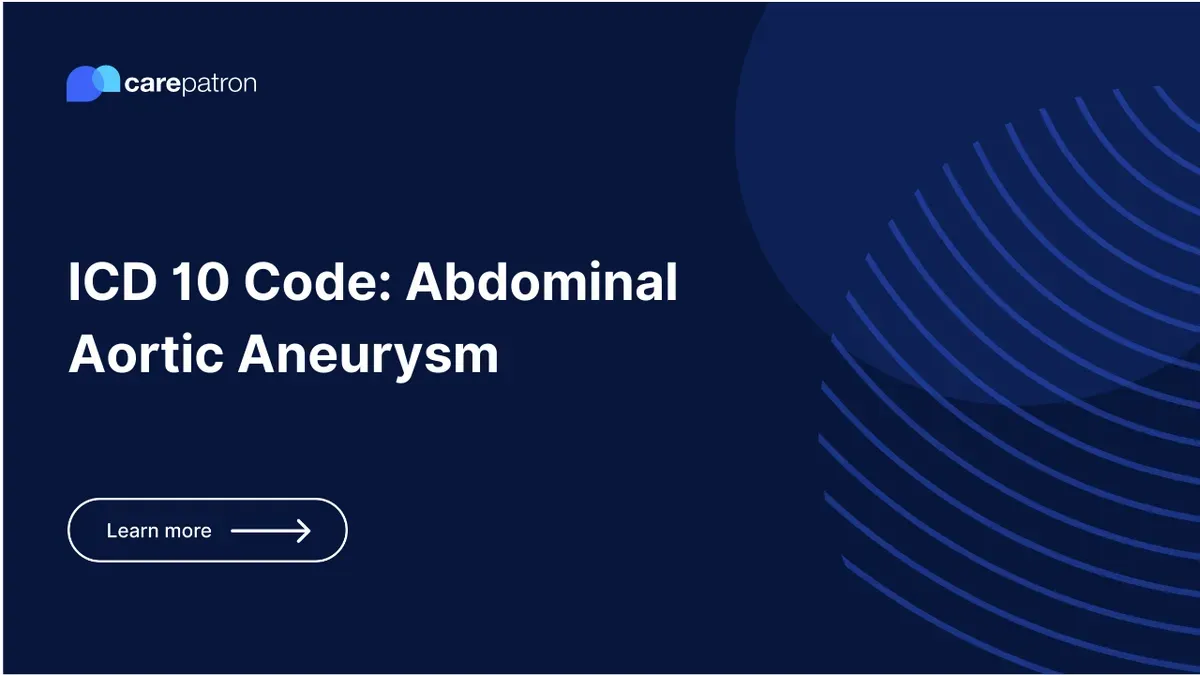What ICD-10 Codes are Used for Abdominal Aortic Aneurysm
Here’s a list of the most common Abdominal Aortic Aneurysm ICD Codes you can use when coding and billing organized into whether it has ruptured or not:
Unruptured
- I71.40: Abdominal aortic aneurysm, without rupture, unspecified
- I71.41: Pararenal abdominal aortic aneurysm, without rupture
- I71.42: Juxtarenal abdominal aortic aneurysm, without rupture
- I71.43: Infrarenal abdominal aortic aneurysm, without rupture
Ruptured
- I71.30: Abdominal aortic aneurysm, ruptured, unspecified
- I71.31: Pararenal abdominal aortic aneurysm, ruptured
- I71.32: Juxtarenal abdominal aortic aneurysm, ruptured
- I71.33: Infrarenal abdominal aortic aneurysm, ruptured
- I71.50: Thoracoabdominal aortic aneurysm, ruptured, unspecified
- I71.51: Supraceliac aneurysm of the abdominal aorta, ruptured
- I71.52: Paravisceral aneurysm of the abdominal aorta, ruptured

